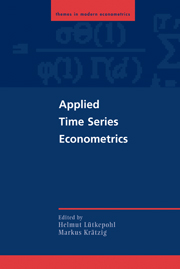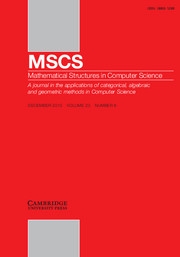Econometric Modelling with Time Series
This book provides a general framework for specifying, estimating and testing time series econometric models. Special emphasis is given to estimation by maximum likelihood, but other methods are also discussed, including quasi-maximum likelihood estimation, generalised method of moments estimation, nonparametric estimation and estimation by simulation. An important advantage of adopting the principle of maximum likelihood as the unifying framework for the book is that many of the estimators and test statistics proposed in econometrics can be derived within a likelihood framework, thereby providing a coherent vehicle for understanding their properties and interrelationships. In contrast to many existing econometric textbooks, which deal mainly with the theoretical properties of estimators and test statistics through a theorem-proof presentation, this book squarely addresses implementation to provide direct conduits between the theory and applied work.
- The principle of maximum likelihood is adopted as the unifying framework for this comprehensive time series text for econometricians, statisticians and applied mathematicians
- Uniquely, it demonstrates econometric methods by means of a suite of programs written in GAUSS and MATLAB, and R
- The text's computer code enables reproduction of theoretical and empirical results published in recent journal articles
Reviews & endorsements
'This book will be an excellent text for advanced undergraduate and postgraduate courses in econometric time series. The statistical theory is clearly presented and the many examples make the techniques readily accessible and illustrate their practical importance.' Andrew Harvey, University of Cambridge
'This book takes an important step forward relative to existing time-series econometrics texts, with, for example, significant coverage of numerical optimization, quasi-maximum-likelihood estimation, nonparametric and simulation-based estimation, latent-factor models, and volatility models. In addition, readers will benefit immensely from the complete sets of included R and Matlab routines. Well done!' Francis X. Diebold, University of Pennsylvania
'This book is exceptionally well done. The blending of theory, application and computation is sublimely done throughout. [It] will be a must-have for advanced graduate students working with economic and financial time series data, and will also form a definitive and up-to-date reference source for both academic and academic-related researchers in the field.' Robert Taylor, University of Nottingham
'This book gave me excitement and sensations similar to visiting Australian wineries: tantalizing vitality, pronounced yet balanced flavours, exposing exhilarating progressive developments, produced by excellent and tasteful craftsmanship, and well-matured and extremely consumer-friendly with its many recipes in various computer codes, thus it is strongly recommended to both young graduates and experienced connoisseurs.' Jan F. Kiviet, Nanyang Technological University and University of Amsterdam
'This textbook strikes an excellent balance between explaining the underlying concepts and intuition, containing the requisite amount of rigor, and providing sufficient guidance for students to be able to apply the methods described to a variety of time-series situations. It is extremely clearly written and should instantly find a wide audience. The book's emphasis on maximum-likelihood as a unifying guiding principle is well-justified, and provides the right context for students to understand how seemingly disparate econometric methods are fundamentally related.' Yacine Ait-Sahalia, Princeton University
Product details
November 2012Adobe eBook Reader
9781139533720
0 pages
0kg
104 b/w illus. 97 tables
This ISBN is for an eBook version which is distributed on our behalf by a third party.
Table of Contents
- Part I. Maximum Likelihood:
- 1. The maximum likelihood principle
- 2. Properties of maximum likelihood estimators
- 3. Numerical estimation methods
- 4. Hypothesis testing
- Part II. Regression Models:
- 5. Linear regression models
- 6. Nonlinear regression models
- 7. Autocorrelated regression models
- 8. Heteroskedastic regression models
- Part III. Other Estimation Methods:
- 9. Quasi-maximum likelihood estimation
- 10. Generalized method of moments
- 11. Nonparametric estimation
- 12. Estimation by stimulation
- Part IV. Stationary Time Series:
- 13. Linear time series models
- 14. Structural vector autoregressions
- 15. Latent factor models
- Part V. Non-Stationary Time Series:
- 16. Nonstationary distribution theory
- 17. Unit root testing
- 18. Cointegration
- Part VI. Nonlinear Time Series:
- 19. Nonlinearities in mean
- 20. Nonlinearities in variance
- 21. Discrete time series models
- Appendix A. Change in variable in probability density functions
- Appendix B. The lag operator
- Appendix C. FIML estimation of a structural model
- Appendix D. Additional nonparametric results.









